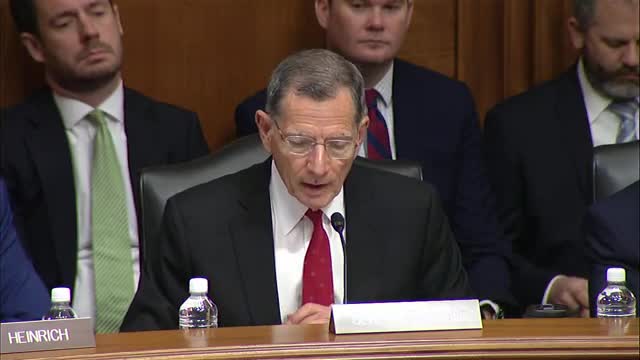BLM faces backlash over controversial public lands rule
June 13, 2024 | Energy and Natural Resources: Senate Committee, Standing Committees - House & Senate, Congressional Hearings Compilation

This article was created by AI summarizing key points discussed. AI makes mistakes, so for full details and context, please refer to the video of the full meeting. Please report any errors so we can fix them. Report an error »

In a recent government meeting, significant discussions centered around the Bureau of Land Management's (BLM) new public lands rule and its implications for federal land use. The rule, finalized in April, has drawn criticism for potentially undermining the long-standing principle of multiple use, which mandates that federal lands be utilized for grazing, energy production, mineral development, and recreation. Critics, including Senator John Barrasso, argue that the rule allows third parties to lease federal lands, effectively blocking productive use and harming communities that rely on these resources.
Tracy Stone Manning, the BLM director, defended the rule, stating it aims to enhance the health and resilience of public lands in the face of climate change. She emphasized that the BLM is committed to balancing conservation with responsible development, asserting that the rule will help protect intact landscapes and restore degraded areas. Stone Manning highlighted the agency's efforts to transition to a clean energy economy, noting that the BLM has approved over 7.3 gigawatts of renewable energy projects, surpassing its goals for 2025.
The meeting also addressed staffing challenges within the BLM, particularly in New Mexico, where delays in project approvals have been attributed to a lack of realty specialists. Stone Manning acknowledged the staffing issues and reported an increase in BLM employees since January 2021, with ongoing efforts to recruit more specialists.
Additionally, the BLM's recent decision to prohibit coal leasing in the Powder River Basin was met with skepticism from some lawmakers, who questioned the timing and potential impact of this action on the coal supply. Stone Manning reiterated the administration's commitment to transitioning to a clean energy economy, despite concerns about energy needs and the feasibility of such a transition.
Overall, the meeting underscored the ongoing tensions between environmental stewardship and resource development, as the BLM navigates its dual mandate to manage public lands for multiple uses while addressing the challenges posed by climate change and energy demands.
Tracy Stone Manning, the BLM director, defended the rule, stating it aims to enhance the health and resilience of public lands in the face of climate change. She emphasized that the BLM is committed to balancing conservation with responsible development, asserting that the rule will help protect intact landscapes and restore degraded areas. Stone Manning highlighted the agency's efforts to transition to a clean energy economy, noting that the BLM has approved over 7.3 gigawatts of renewable energy projects, surpassing its goals for 2025.
The meeting also addressed staffing challenges within the BLM, particularly in New Mexico, where delays in project approvals have been attributed to a lack of realty specialists. Stone Manning acknowledged the staffing issues and reported an increase in BLM employees since January 2021, with ongoing efforts to recruit more specialists.
Additionally, the BLM's recent decision to prohibit coal leasing in the Powder River Basin was met with skepticism from some lawmakers, who questioned the timing and potential impact of this action on the coal supply. Stone Manning reiterated the administration's commitment to transitioning to a clean energy economy, despite concerns about energy needs and the feasibility of such a transition.
Overall, the meeting underscored the ongoing tensions between environmental stewardship and resource development, as the BLM navigates its dual mandate to manage public lands for multiple uses while addressing the challenges posed by climate change and energy demands.
View full meeting
This article is based on a recent meeting—watch the full video and explore the complete transcript for deeper insights into the discussion.
View full meeting